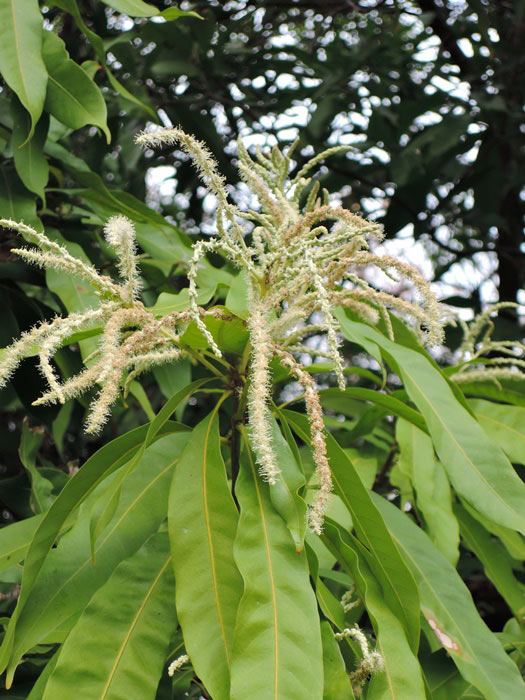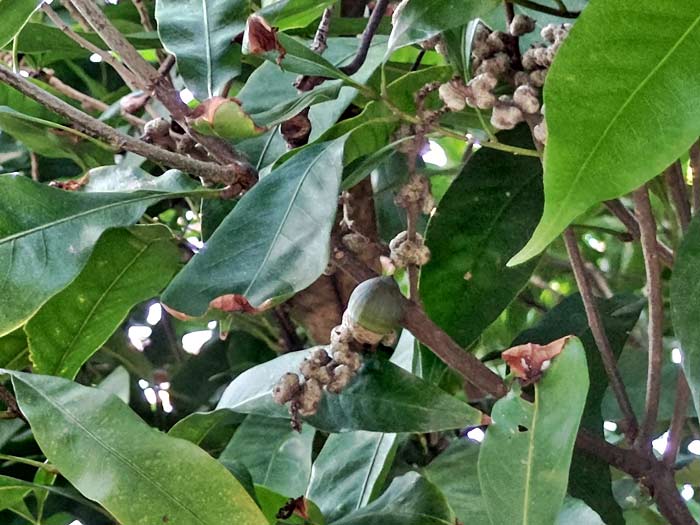Lithocarpus hancei
The three-cupule oak is an evergreen tree and a common species of native Fagaceae in Taiwan. It is widely distributed in the forests and plains of Taiwan's low- to mid-altitude regions. The plant itself exhibits considerable variation, making it one of the more difficult species to identify. Some literature divides the Taiwanese species into three varieties based on distribution, fruit and leaf morphology.
The three-cupule oak is a monoecious plant, with male and female flowers on the same tree. The flowering period is around March each year. The male inflorescences form erect or ascending spikes, with numerous small flowers resembling yellowish-white fireworks exploding on the tree crown, creating a lively scene. Female flowers typically grow in clusters of three at the base of the inflorescence. After a year of development, they form three connected fruits, which is the origin of the plant's Taiwanese name, “San Dou” (three cupules). The nuts of the three-cupule oak mature around October. The fruits are cone-shaped with a slightly pointed tip, and about one-third of the fruit is enclosed by a cup-shaped cupule, giving it a charming appearance.
The three-cupule oak not only has ornamental value but also plays an important ecological role. Its flowers serve as an important nectar source, attracting insects for pollination; the mature nuts are a vital food source for many wild animals, such as squirrels, helping to maintain the balance of the forest ecosystem. Additionally, the three-cupule oak has strong environmental adaptability and is often used as a tree species in park green spaces, providing shade and enriching urban biodiversity.
The three-cupule oak is distributed in the southern regions of China south of the Yangtze River and throughout Taiwan. It is planted in the Central Lowland Area of the Botanical Garden and is one of the representative plants of lowland evergreen broadleaved forests.

